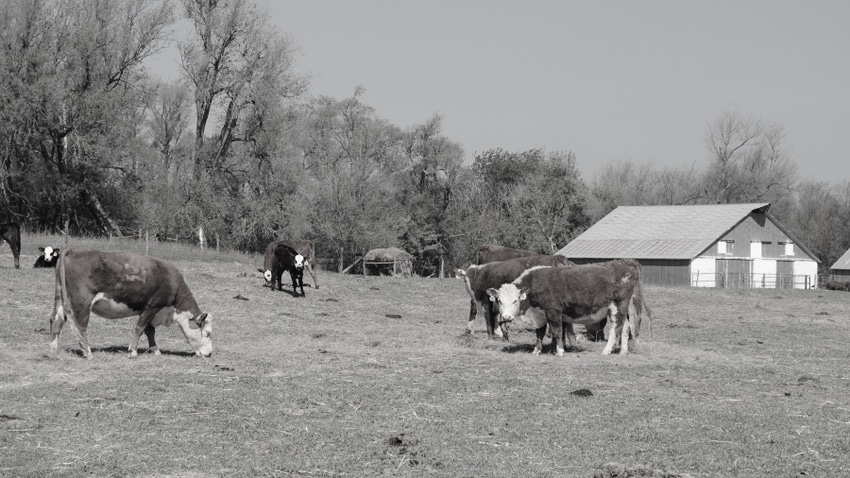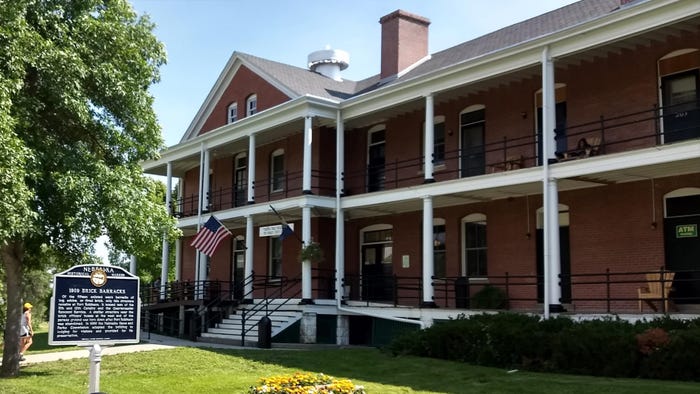
It was 1958. Jim Wiltbank, who had been working as a geneticist in Beltsville, Md., for USDA in the animal husbandry division, moved his growing family to the Pine Ridge of Nebraska and the USDA Beef Cattle Research Station at historic Fort Robinson near Crawford, Neb.
Fort Robinson, which celebrates 150 years in 2024, played a key role during the conflicts on the Plains. It was where Lakota war leader Crazy Horse was killed. It was the scene of the Cheyenne Outbreak. After World War I, the fort was used as a Quartermaster Remount Depot, the world’s largest training, care and breeding center for army horses and mules.
It became a German POW camp and War Dog Reception and Training Center during World War II. When the Army decided to decommission the fort in 1948, it was repurposed into a USDA beef research station. In 1954, Soil Conservation Service Training Center under USDA was added to the fort’s long resume. So, the fort had exchanged its military past for a more agricultural, research-oriented chapter.
Researchers on-site
That was where Wiltbank landed. He lived at the fort. The four double sets and one single occupancy dwelling for the post commander in the heydays of the fort became housing for employees, such as Wiltbank, of the research center.
The trials that were conducted at Fort Robinson until the research station was closed in 1971, and the fort made the transition into the state park it is today, included crucial studies on the effect of heterosis and crossbreeding on health and performance of beef cattle. These are studies that researchers still cite today.
“These estimates of heterosis represented some of the first research data quantifying the benefits of crossbreeding in beef cattle, using breeds that were dominant in the U.S. at the time,” says Matt Spangler, Nebraska Extension beef genetics specialist. “I suspect the notion of crossbreeding was generally unpopular at the time, but being able to show proof that it was indeed useful no doubt led to some of the first designed crossbreeding programs in the U.S.”

FORT AND CATTLE: The barracks housed officers during the days Fort Robinson, near Crawford, Neb., served as a military outpost. Beginning in 1949, they housed employees and researchers at the beef cattle research station at the old fort. Fort Robinson isn’t known for its days as a beef cattle research station, except in animal science circles, but the fort played an important role in the study of heterosis in cattle, and breeding and production management in heifers during its heyday — not as a military outpost, but as a USDA research facility. Today, it is a well-known Nebraska state park.
According to a biography by W.C. Burrell and M.C. Wiltbank — written for the American Society of Animal Science — at the time Wiltbank worked at Fort Robinson, graduate students worked with him at the fort through a cooperative agreement between the University of Nebraska and Montana State University.
He helped develop research facilities at the fort and focused on studying the age and weight at which different breeds of heifers reached puberty. He developed guidelines for managing heifers through their second calf. He looked at the relationship between body condition and rations with the cow’s ability to return into estrus and conception rates. He also looked at the nutritional needs of cows during pregnancy, and before breeding.
“The heifer development work, in particular the target weight at time of breeding, is still referenced today, and research in that space has certainly been impacted and informed by the work Dr. Wiltbank did,” Spangler says. “The age at which different breeds reach puberty has no doubt changed in the past several decades given within breed selection and introgression of British breeds into Continental breeds.”
Wiltbank and his colleagues clearly showed that heterosis affects age at puberty. The fundamental relationships between reproduction and nutrition were reported by Wiltbank and colleagues, and these basic principles not only were a foundation of future research work, but also have been cited multiple times in presentations at conferences such as the Range Beef Cow Symposium, Spangler adds.
State park
During its time as a research station, many of the fort’s historic buildings were demolished. By 1955, much of the fort was acquired by the Nebraska Game and Parks Commission. The Nebraska State Historical Society opened a museum on the grounds, and in 1971, beef trials were officially moved to the USDA Meat Animal Research Center (USMARC) at Clay Center. Fort Robinson took on a new life once again, this time as a state park.
Today, Fort Robinson, except for modern amenities, looks much like it did in its military heyday. Most visitors know about the military history of this site, but few know about the beef research station, unless they dig deeply into the exhibits on display interpreting the fort’s unique history.
Some of the lost structures have been rebuilt, and much of the fort’s historic integrity remains in place. Stately housing that once served post officers and soldiers now provides lodging for park guests.

IN THE SADDLE: Visitors who spend time emersed in the history of the fort — or on trail rides, a stagecoach ride, Jeep rides into the buttes, at the swimming pool or cookouts — may have no idea that the fort also served an important role in beef cattle studies in the 1950s and 1960s.
Fort Robinson served multiple purposes as a U.S. Army outpost, and in subsequent years as a beef research station. When you visit the fort today, you can’t help but walk onto the gigantic parade grounds, view the rugged buttes as a backdrop, and visualize what it must have been like when soldiers were garrisoned there, and the outpost was bustling with military activity. But you can also visualize cattle research in a High Plains setting as just another part of the colorful history of the legendary location.
“I think one of the most important things is that the foundational work continued as Fort Robinson closed and USMARC opened,” Spangler says. “The work from Fort Robinson was not ‘lost,’ and the foundation set there has continued in many ways.”
Learn more about Fort Robinson at outdoornebraska.gov. Learn more about USMARC at ars.usda.gov.
Read more about:
BeefAbout the Author(s)
You May Also Like






